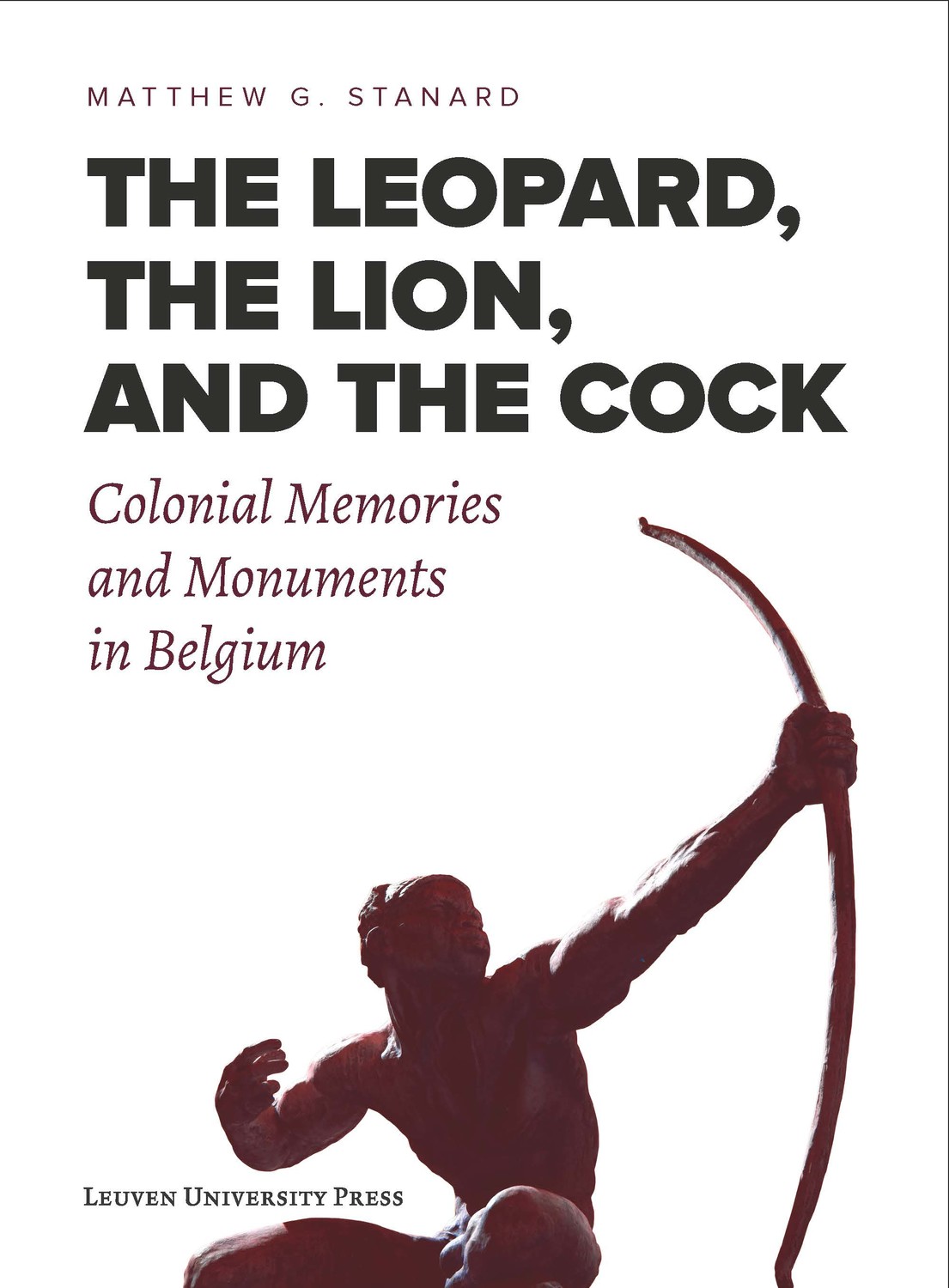
The Leopard, the Lion, and the Cock
Colonial Memories and Monuments in Belgium
Matthew Stanard
Thought-provoking
reflection on culture, colonialism, and the remainders of empire in Belgium
after 1960
The book foregrounds the enduring presence of “empire” in everyday Belgian life in the form of permanent colonial markers in bronze and stone, lieux de mémoire of the country’s history of overseas expansion. By means of photographs and explanations of major pro-colonial memorials, as well as several obscure ones, the book reveals the surprising degree to which Belgium became infused with a colonialist spirit during the colonial era.
Another key component of the analysis is an account of the varied ways in which both Dutch- and French-speaking Belgians approached the colonial past after 1960, treating memorials variously as objects of veneration, with indifference, or as symbols to be attacked or torn down. The book provides a thought-provoking reflection on culture, colonialism, and the remainders of empire in Belgium after 1960.
Free digital appendix: detailed list of monuments in Belgium linked to the country’s colonial past
This publication is GPRC-labeled (Guaranteed Peer-Reviewed Content).
Format: Monograph - free ebook - PDF
338 pages
ISBN: 9789461665218
Publication: February 15, 2023
Languages: English
Download: https://library.oapen.org/handle/20.500.12657/61220
Zoals de
ondertitel Colonial Memories en Monuments in Belgium verraadt,
had Stanard met dit boek een dubbel doel voor ogen. Enerzijds is het boek doorspekt met uitgelichte kaders waarin enkele van de meest opvallende koloniale straatnamen, standbeelden en herdenkingsplaques worden beschreven. Zo krijgt de lezer een coherent en aangenaam leesbare introductie van de totstandkoming, de verheerlijkte actor en de huidige toestand bij de meest opvallende plekken van koloniale herinnering. Anderzijds geeft hij aan de hand van vijf chronologisch afgebakende hoofdstukken een introductie tot de belangrijkste uitingsvormen van het maatschappelijk debat in België. Hierbij plaatst Stanard het debat over kolonialisme steeds in een bredere maatschappelijke context. Met zijn verwijzingen naar de impact van de Koningskwestie, de brand in de Innovation, de Bende van Nijvel en de affaire-Dutroux roept hij op accurate wijze de sfeer van het desbetreffende tijdsgewricht op.
Gert Huskens, Belgisch Tijdschrift voor Nieuwste Geschiedenis, L, 2020, 3-4
Stanards studie van de verschuivingen in postkoloniale mentalités is verfrissend omdat ze naast de heftige emoties die met dekolonisatie gepaard gaan ook ruimte laat voor de onverschilligheid waarmee veel Belgen zich door het koloniale landschap bewegen. Het kolonialistische straatbeeld in België, met zijn patriottische lieux de mémoire, overleefde 1960 namelijk. De beelden die de revue passeren zijn relieken uit het koloniale tijdperk: hun esthetiek en thematiek ademen de Belgische beschavingsmissie.
Kristof Smeyers, de Nederlandse Boekengids
This
book is timely and will certainly be a useful contribution to the public
debate. It presents, for the first time, an impressive overview of the
colonial remnants in the Belgian land- and cityscape.
Guy Vanthemsche,
Vrije Universiteit Brussel
L’ouvrage de Matthew G. Stanard vaut largement le détour. Il nous ouvre bien des portes sur un passé riche et controversé. A découvrir!
Chantal Kesteloot, H-Soz-Kult, 07.10.2020, www.hsozkult.de/publicationreview/id/reb-28958
Les références à la colonisation se comptent par centaines dans l’espace public. Statues, monuments, plaques commémoratives, noms de rues… L’inventaire est sans fin. L’historien Matthew Stanard, auteur de plusieurs ouvrages sur le sujet, a entrepris de les recenser. En 2019, il publie "The Leopard, the Lion, and the Cock", dans lequel il examine les effets à long terme du passé colonial de notre pays.
Rtbf.be, 12/06/2020
Johan Lagae, Journal of Design History, epaa017, https://doi.org/10.1093/jdh/epaa017
Goddeeris, I., BMGN - Low Countries Historical Review, 135(1), pp.70–94.
Il n’empêche : M.G. Stanard a fait le point. La lecture de son ouvrage constitue désormais un passage obligé pour tout qui voudra prendre part aux débats sociaux sur lesquels pèsent encore le passé colonial de la Belgique. Une histoire renouvelée, notamment sur la base de cet ouvrage, doit être enseignée et transmise ; une histoire connectée autant aux enjeux socio-culturels du présent qu’aux derniers résultats de la recherche en sciences humaines et sociales. Pourvu que les éditeurs saisissent l’occasion de traduire cet ouvrage afin qu’il soit lu par le plus grand nombre. Pour que les voix critiques ne soient pas à nouveau étouffées lors des prochaines commémorations…
Romain Landmeters, Contemporanea, Jaargang XLII — Jaar 2020 —
Nummer 1
A bien des égards, cet ouvrage était attendu. Non seulement il contribue à rendre intelligible l’impact colonial dans l’espace culturel et public belge au travers de l’histoire des monuments coloniaux, mais il instruit toute une série de questions sur la manière dont l’identité nationale belge s’articule au passé colonial.
Sarah Demart, H-France Review, Vol. 19 (November 2019), No. 257
